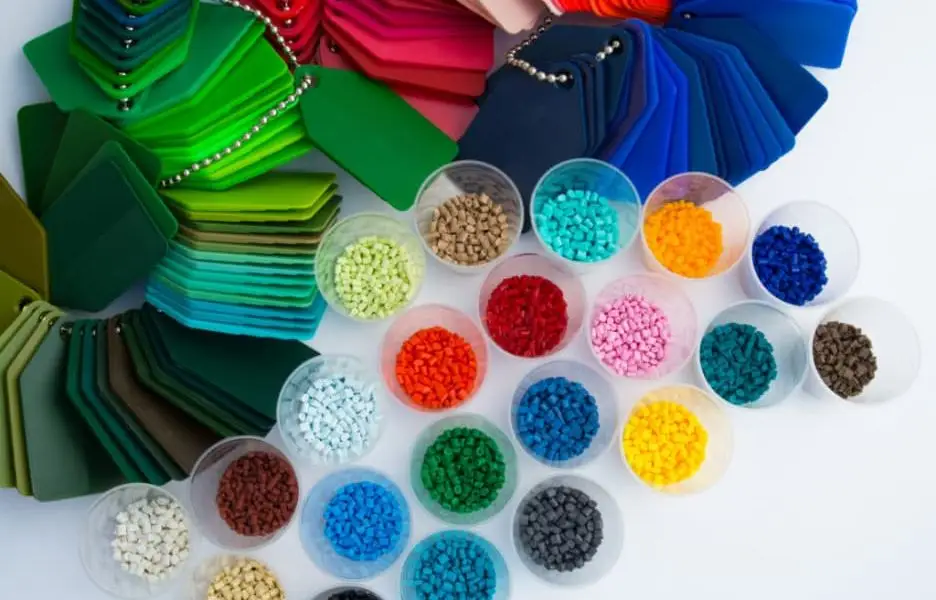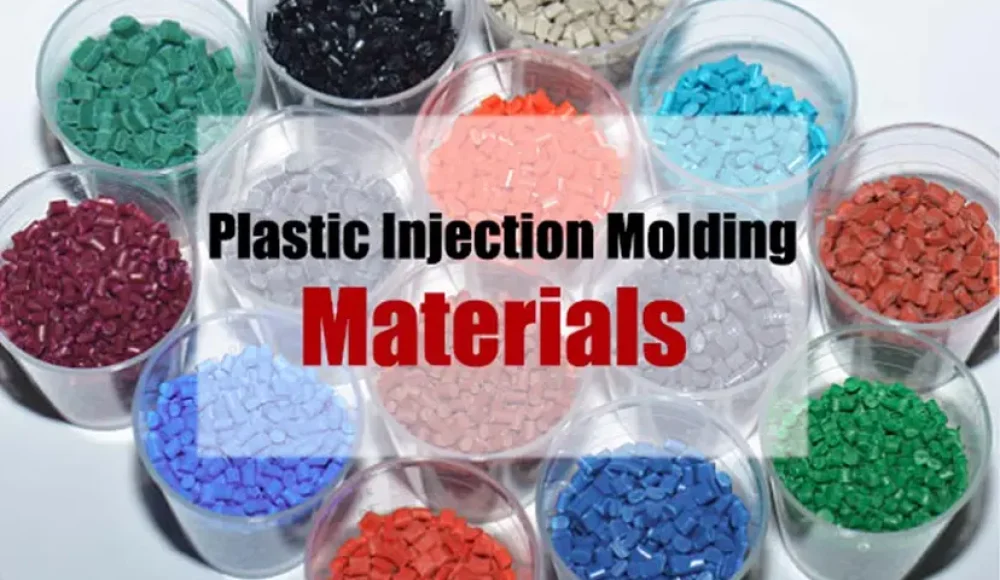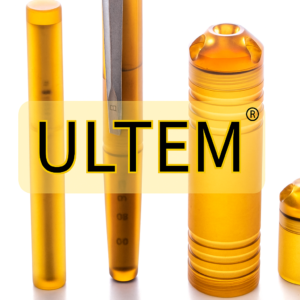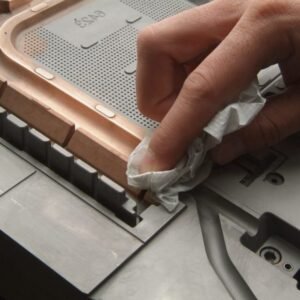Seleccionar el material adecuado es uno de los pasos más críticos en injection molding design. The choice of thermoplastic resin determines not only the mechanical strength and durability of a molded part but also its manufacturability, acabado superficial, costo, and long-term reliability.
This guide provides engineers and designers with a structured framework for quantitatively evaluating injection molding materials. It focuses on the key mechanical, térmico, and chemical properties that influence performance, helping you select the optimal resin for your specific application.
Introducción

materiales de moldeo por inyección de plástico
Choosing a thermoplastic resin for injection molding can be a complex engineering decision. Each polymer family exhibits unique characteristics that respond differently to mechanical loads, temperature variations, y condiciones ambientales. To make a sound selection, engineers must understand the relationship between material structure and performance, as well as the specific demands of the application.
For safety-critical, high-performance, or reliability-sensitive components, a thorough engineering analysis is mandatory. This includes evaluating stress, cepa, and environmental exposure to determine which material meets all operational requirements.
Sin embargo, not every project requires extensive simulation or testing. Many molded components operate under mild conditions—such as room temperature and low loads—where common resins like ABS, polipropileno (PÁGINAS), or polycarbonate (ordenador personal) are more than adequate. For such cases, simplified guidelines—covered later in this guide under “Don’t Make Me Do the Math”—can help non-engineers make practical and cost-effective material decisions.
Why Material Selection Matters
Material selection often becomes a guessing game when there’s a lack of understanding about:
How internal polymer structure affects properties.
How to clearly define real-world application requirements.
Where to find reliable and comparable data for candidate materials.
Even small variations in resin composition or processing parameters can significantly affect resistencia a la tracción, estabilidad dimensional, or impact resistance. Por lo tanto, informed material selection ensures consistent quality, rentabilidad, and predictable performance throughout a product’s lifecycle.
Comparing Common Injection Molding Materials
| Resin Type | Beneficios clave | Aplicaciones Típicas | Design Considerations |
| POM (Acetal) | Difícil, rígido, fuerte, baja fricción, resistente a la fatiga | Engranajes, zapatillas, impulsores, interruptores, perillas | Sensitive to shrinkage; difficult to paint or coat |
| PMMA (Acrílico) | Excellent clarity, resistente a los arañazos, low shrink | Lentes, señales, light pipes | Frágil, poor chemical resistance |
| abdominales | Difícil, resistente a productos químicos, dimensionalmente estable, bajo costo | Carcasa electrónica, handheld devices, partes cosméticas | May show knit lines; thick sections can sink |
| PEAD | Difícil, impacto- and chemical-resistant, ligero | Containers, juguetes, muebles | High shrinkage, low surface energy |
| ordenador personal (policarbonato) | Alta resistencia, clarity, y resistencia al impacto | Lentes, lighting, carcasas, bulletproof glass | Poor chemical resistance; may bubble in thick parts |
| ABS/PC Blend | Good balance of toughness and processability | Automotor, electrónica | Lower cost than PC; improved molding properties |
| PÁGINAS (polipropileno) | Flexible, resistente a la fatiga, resistente a productos químicos | Hinges, tapa, medical tubing | Shrink and warp possible; may void in thick areas |
| OJEADA | High-temperature and chemical resistance | Aeroespacial, zapatillas, dispositivos médicos | Very expensive; Ultem or PPSU are cheaper alternatives |
| PEI (Ultem) | Fuerte, a prueba de calor, dimensionalmente estable | Médico, lighting, HVAC components | Caro, but cheaper than PEEK |
| PPSU | High heat and chemical tolerance, esterilizable | Medical trays, aircraft interiors | Thick sections may void; limited color options |
| Pensilvania (Nylon) | Alta resistencia, resistencia a la abrasión | Engranajes, casquillos, partes estructurales | Absorbe la humedad; may warp |
| PBT/PET | Excellent electrical and dimensional properties | Accesorios, automotor, eléctrico | Prone to warp in glass-filled grades |
| LCP | High flow, resistencia química, baja expansión térmica | Conectores, PCBS | Caro, anisotropic shrink |
| PPP | High chemical and thermal resistance | Automotor, electrical housings | Requires precise crystallization control |
About the Standard Material Data Sheet
A material data sheet provides essential mechanical and thermal properties—typically measured at room temperature. While these values (p.ej., resistencia a la tracción, elongation, flexural modulus) are important, they often describe failure conditions rather than real-world performance. Engineers must therefore interpret data sheets carefully, considering environmental conditions, Parte de geometría, and expected loads.
Más que 85,000 commercial plastics exist, grouped into around 45 polymer families. Thermoplastics dominate modern manufacturing, accounting for roughly 85% of all plastic use, while thermosets make up the remaining 15%. Supplementary information from suppliers—like design manuals and case studies—can help bridge the data gaps for engineering-grade materials.
Perfect 👍 Let’s continue and complete the rewritten and SEO-optimized version of your article — picking up from where it left off (“Don’t Make Me Do the Math!") and finishing it with a strong, educational ending that fits your technical SEO writing style.
Don’t Make Me Do the Math!
Many material property charts show ratios like strength-to-weight o stiffness-to-cost, but in practical mold design, few engineers have time to crunch these numbers manually. En cambio, the best practice is to create a shortlist of viable materials based on mechanical and thermal requirements, entonces compare specific, real-world properties (p.ej., tensile strength at operating temperature, shrink rate, and melt flow).
Online material databases and supplier datasheets make this easier than ever. Simply filtering by your performance range can narrow hundreds of resins down to a handful of candidates. Once that shortlist is ready, su molder or resin distributor can provide detailed test data for validation and part trials.
Consejo profesional: Always test with the exacto resin grade you plan to use in production — even small differences in additives, contenido de humedad, or supplier formulations can significantly change flow and shrink behavior.
Pruebas y Validación: Never Skip This Step
Material selection doesn’t end at the data sheet. After you’ve identified one or two promising candidates, prototype testing is essential. Build a small pilot mold, run short shots, and inspect critical features. This reveals how the material flows, fills, and warps in your actual part geometry — insights that simulations can’t always predict.
Typical validation checks include:
Precisión dimensional — Compare measured dimensions with CAD data.
Acabado superficial — Confirm texture replication and gloss levels.
Mechanical testing — Evaluate tensile, impacto, and fatigue performance.
Environmental resistance — Test against chemicals, Exposición a los rayos UV, or temperature cycles.
By catching material-related issues early, you can prevent costly redesigns or warranty claims later.
Partner with Your Molding Expert
Even the most experienced design engineers benefit from collaborating with an experienced molder during material selection. Mold designers and process engineers can advise on:
Proper mold steel choices to match resin abrasiveness or corrosion tendencies.
The need for mold coatings o hot runner compatibility for difficult materials.
Ajuste gate placement, venting, y ángulos de borrador for specific resin flow properties.
Their production insight often leads to better long-term consistency and fewer processing challenges — ultimately saving both time and money.
Sustainability and Recycling Considerations
Today’s manufacturing environment places increasing emphasis on sustainability. Cuando sea posible, considerar recycled or bio-based materials. Many resin suppliers now offer PCR (Post-Consumer Recycled) o bio-resin versions of standard polymers such as PP, MASCOTA, and PA.
While these sustainable options can slightly alter mechanical or color properties, they help reduce environmental impact and support greener product initiatives. Always test these materials under real processing conditions to ensure consistent quality.
Pensamientos finales
Choosing the right injection molding material is one of the most important decisions in part design. The resin you choose determines not only product strength and performance but also costo, durabilidad, y capacidad de fabricación.
Here’s a quick summary to guide your process:
Define your requirements — strength, temperatura, chemical exposure, apariencia, y costo.
Shortlist materials that meet your property range.
Evaluate process compatibility — shrinkage, moisture sensitivity, capacidad de moldeo.
Prototype and validate before final selection.
Consult your molder to fine-tune production parameters.
A thoughtful, data-driven approach ensures every molded component meets performance targets and budget expectations — the foundation of reliable, repeatable production.
Internal Linking Suggestions (for WordPress)
Guía de diseño de ángulos de tiro
13 Types of Surface Finishes in Die Casting




1 pensamiento en “Guía de selección de materiales de moldeo por inyección”